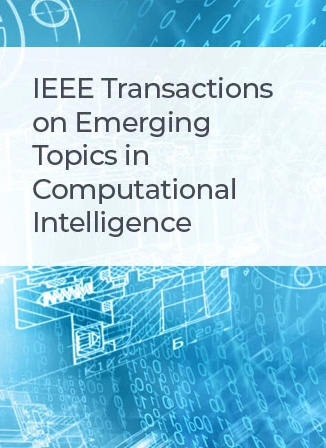Neuromorphic Auditory Perception by Neural Spiketrum
IF 5.3
3区 计算机科学
Q1 COMPUTER SCIENCE, ARTIFICIAL INTELLIGENCE
IEEE Transactions on Emerging Topics in Computational Intelligence
Pub Date : 2024-09-18
DOI:10.1109/TETCI.2024.3419711
引用次数: 0
Abstract
Neuromorphic computing holds the promise to achieve the energy efficiency and robust learning performance of biological neural systems. To realize the promised brain-like intelligence, it needs to solve the challenges of the neuromorphic hardware architecture design of biological neural substrate and the hardware amicable algorithms with spike-based encoding and learning. Here we introduce a neural spike coding model termed spiketrum, to characterize and transform the time-varying analog signals, typically auditory signals, into computationally efficient spatiotemporal spike patterns. It minimizes the information loss occurring at the analog-to-spike transformation and possesses informational robustness to neural fluctuations and spike losses. The model provides a sparse and efficient coding scheme with precisely controllable spike rate that facilitates training of spiking neural networks in various auditory perception tasks. We further investigate the algorithm-hardware co-designs through a neuromorphic cochlear prototype which demonstrates that our approach can provide a systematic solution for spike-based artificial intelligence by fully exploiting its advantages with spike-based computation.神经尖谱的神经形态听觉感知
神经形态计算有望实现生物神经系统的能量效率和鲁棒学习性能。为了实现未来的类脑智能,需要解决生物神经基质的神经形态硬件架构设计和基于峰值编码和学习的硬件友好算法的挑战。在这里,我们引入了一个被称为尖峰的神经尖峰编码模型,以表征时变模拟信号,通常是听觉信号,并将其转换为计算效率高的时空尖峰模式。它最大限度地减少了模拟-尖峰转换过程中的信息损失,并对神经波动和尖峰损失具有信息鲁棒性。该模型提供了一种稀疏高效的编码方案,具有精确可控的尖峰率,便于在各种听觉感知任务中训练尖峰神经网络。我们通过一个神经形态耳蜗原型进一步研究了算法-硬件协同设计,这表明我们的方法可以通过充分利用基于峰值的计算优势,为基于峰值的人工智能提供系统的解决方案。
本文章由计算机程序翻译,如有差异,请以英文原文为准。
求助全文
约1分钟内获得全文
求助全文
来源期刊

IEEE Transactions on Emerging Topics in Computational Intelligence
Mathematics-Control and Optimization
CiteScore
10.30
自引率
7.50%
发文量
147
期刊介绍:
The IEEE Transactions on Emerging Topics in Computational Intelligence (TETCI) publishes original articles on emerging aspects of computational intelligence, including theory, applications, and surveys.
TETCI is an electronics only publication. TETCI publishes six issues per year.
Authors are encouraged to submit manuscripts in any emerging topic in computational intelligence, especially nature-inspired computing topics not covered by other IEEE Computational Intelligence Society journals. A few such illustrative examples are glial cell networks, computational neuroscience, Brain Computer Interface, ambient intelligence, non-fuzzy computing with words, artificial life, cultural learning, artificial endocrine networks, social reasoning, artificial hormone networks, computational intelligence for the IoT and Smart-X technologies.
 求助内容:
求助内容: 应助结果提醒方式:
应助结果提醒方式:


